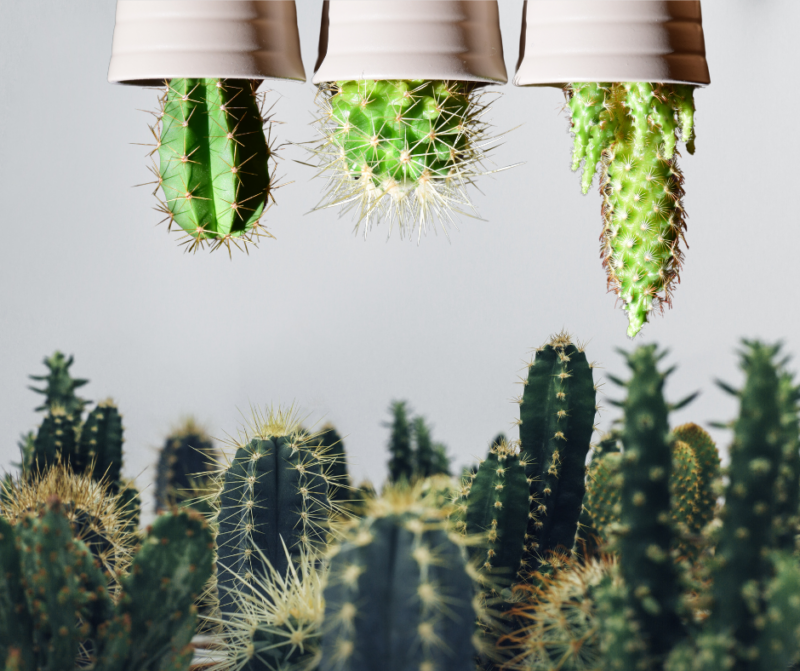Cacti, those spiky, resilient plants that thrive in the toughest of environments, have a lot more to offer than just a cool look. Beyond their ability to survive in extreme conditions, cacti come with a surprising array of benefits that might make you want to fill your home with them.
Boosts Air Quality

While cacti might not be the first plants you think of for air purification, they’re actually quite effective at improving indoor air quality.
- CAM Photosynthesis: Cacti absorb carbon dioxide at night, unlike most plants that do so during the day. This process, known as CAM (Crassulacean Acid Metabolism) photosynthesis, allows them to release oxygen while you sleep, improving the air quality in your home.
- Toxin Absorption: According to NASA’s Clean Air Study, certain houseplants, including cacti, can help filter out toxins like benzene and formaldehyde from the air.
Table: Cactus Air Quality Benefits
| Process | Benefit |
|---|---|
| CAM Photosynthesis | Absorbs CO2 at night, releases oxygen |
| Toxin Absorption | Filters out harmful chemicals |
Reduces Stress

Cacti can be more than just eye-catching decor—they can actually help you feel more relaxed and reduce stress levels.
- Calming Presence: Studies have shown that having plants around can lower stress levels. The unique appearance and soothing green hues of cacti can create a calming atmosphere in your home or office.
- Natural Break from Screens: Cacti provide a visual break from screens, which can reduce eye strain and mental fatigue.
Quick Tip: Place a cactus on your desk to give your eyes a break during long work hours.
Minimal Maintenance

Not everyone has a green thumb, and that’s where cacti truly shine. These plants are incredibly low-maintenance, making them perfect for those with busy lives.
- Water Storage: Cacti store water in their thick stems, allowing them to survive for weeks without watering. This makes them ideal for forgetful plant owners.
- Perfect for Travelers: Heading out of town? No worries. Your cactus will be just fine on its own for a while.
Maintenance Comparison Table
| Plant Type | Watering Frequency | Maintenance Level |
|---|---|---|
| Cactus | Every few weeks | Very Low |
| Fern | Weekly | Moderate |
| Orchid | Bi-weekly | High |
Skin Health Benefits

Did you know that certain types of cacti can work wonders for your skin? The gel inside prickly pear cacti is particularly beneficial.
- Natural Hydration: Cactus gel is rich in vitamins E and K, which provide deep hydration and help soothe dry skin.
- Anti-Aging: Packed with antioxidants, cactus gel can reduce the appearance of wrinkles and fine lines, promoting youthful-looking skin.
Pro Tip: Try cactus-infused skincare products for a natural, hydrating boost.
Sunburn Relief
Spent too much time in the sun? Cactus gel, particularly from prickly pear, can help soothe sunburn and speed up the healing process.
- Anti-Inflammatory Properties: The gel helps reduce redness and inflammation, providing relief from the pain of sunburn.
- Cooling Effect: Apply cactus gel to sunburned areas for a cooling sensation that helps prevent peeling.
Cactus vs. Aloe Vera
| Feature | Cactus Gel | Aloe Vera Gel |
|---|---|---|
| Stickiness | Less sticky | More sticky |
| Antioxidant Content | Higher | Moderate |
| Skin Sensitivity | Less likely to cause irritation | Can cause irritation in some |
Aids in Digestion
Cacti aren’t just good for your skin—they’re good for your gut too. The prickly pear cactus, also known as nopal, is a staple in many cultures and offers significant digestive benefits.
- High in Fiber: Prickly pear pads are rich in dietary fiber, which promotes healthy digestion and regular bowel movements.
- Blood Sugar Regulation: The fiber in prickly pear can help stabilize blood sugar levels, making it a great food for those with diabetes or insulin resistance.
Fiber Content in Prickly Pear
| Serving Size | Fiber Content |
|---|---|
| 1 Cup Nopal | 5 grams |
| 1 Apple | 4 grams |
| 1 Slice Whole Wheat Bread | 2 grams |
Nutritional Powerhouse
Beyond aiding digestion, the prickly pear cactus is loaded with nutrients that can boost your overall health.
- Vitamin C: Prickly pear is a great source of vitamin C, which supports immune function and skin health.
- Antioxidants: Rich in betalains and polyphenols, prickly pear helps combat inflammation and oxidative stress.
Nutritional Profile of Prickly Pear
| Nutrient | Amount Per Serving (1 cup) |
|---|---|
| Vitamin C | 23 mg (25% DV) |
| Magnesium | 88 mg (22% DV) |
| Potassium | 328 mg (9% DV) |
Supports Weight Loss
If you’re trying to shed some pounds, the prickly pear cactus can be a helpful ally.
- Appetite Suppressant: The high fiber content helps you feel full longer, reducing the temptation to snack.
- Boosts Metabolism: Nutrients in prickly pear, like vitamin C, help boost metabolism by aiding in fat breakdown.
Weight Loss Support
| Benefit | How It Helps |
|---|---|
| Fiber | Keeps you full, curbing appetite |
| Vitamin C | Aids in fat metabolism |
Promotes Heart Health
Your heart can benefit from cacti too! Prickly pear, in particular, has several heart-healthy advantages.
- Lowers Cholesterol: Soluble fiber in prickly pear helps lower LDL cholesterol by binding to it in the digestive tract.
- Blood Pressure Regulation: The potassium in prickly pear helps counteract sodium’s effects, promoting lower blood pressure.
Heart Health Benefits
| Nutrient | Heart Benefit |
|---|---|
| Soluble Fiber | Lowers LDL cholesterol |
| Potassium | Reduces blood pressure |
Eco-Friendly and Sustainable
Cacti aren’t just good for you—they’re good for the planet. These plants are among the most eco-friendly options available.
- Low Water Consumption: Cacti require minimal water, making them a sustainable choice, especially in drought-prone areas.
- Carbon Sequestration: Cacti help capture and store carbon dioxide, contributing to the fight against climate change.
Sustainability Features
| Feature | Environmental Benefit |
|---|---|
| Low Water Use | Conserves water resources |
| Carbon Sequestration | Reduces atmospheric CO2 |

